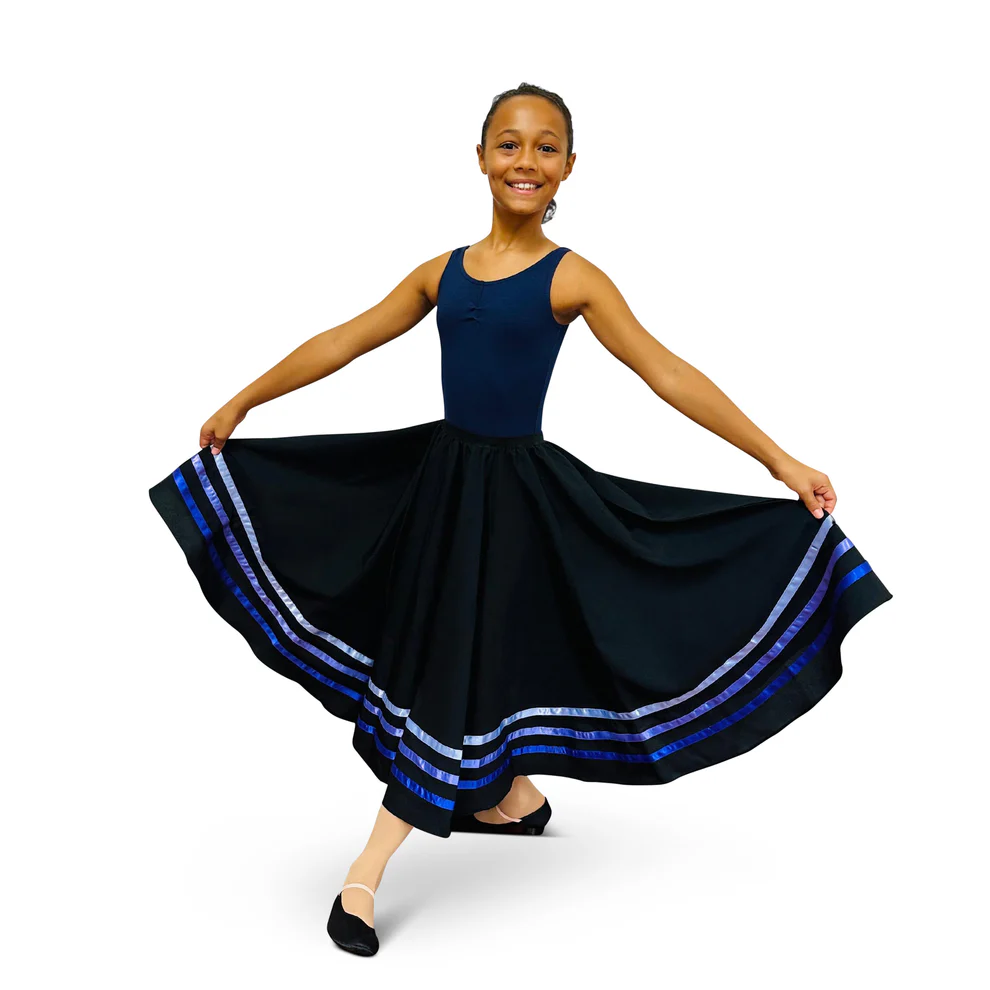The Significance of the Character Skirt in Royal Academy of Dance Examinations

The Significance of the Character Skirt in Royal Academy of Dance Examinations
In the realm of ballet, the Royal Academy of Dance (RAD) stands as a prestigious
institution dedicated to the advancement of dance education and performance. Within its
structured examination process, the character skirt holds a unique place, serving as
more than just a piece of costume: it embodies the intersection of artistry, tradition and
expressive movement. This article explores the meaning behind the character skirt in
RAD examinations, uncovering its role in enhancing performance, fostering creativity,
and connecting students to the rich heritage of ballet.
Enhancing Performance
The character skirt is an essential component in the RAD examination framework,
particularly in character dance, which draws on folk and national dance styles. By
incorporating the character skirt, dancers are encouraged to embody the spirit of the role
they are portraying. The flowing fabric not only enhances visual appeal but also
facilitates a range of movements, allowing the dancer to express emotion and narrative
more vividly. As the skirt moves with the dancer, either holding or swishing the circular
fabric, it becomes an extension of their body, accentuating spins, turns and leaps. This
dynamic interaction between the dancer and the costume enriches the overall
performance, providing a visual spectacle that captivates audiences and examiners
alike.
Fostering Creativity and Expression
The character skirt serves as a tool for fostering creativity and personal expression
among students. Unlike classical ballet, which often emphasises strict adherence to
technique and form, character dance encourages dancers to interpret their roles in a
more individualised manner. The use of the skirt allows students to explore their artistic
identity, enabling them to infuse their performances with personal flair and interpretation.
This creative freedom is vital for developing confidence and individuality within the
structured framework of ballet training, encouraging students to take ownership of their
movements and express their unique stories through dance.
Connection to Heritage and Tradition
The character skirt is steeped in the cultural history of dance. Character dance often
draws from various cultural traditions, reflecting the diverse backgrounds from which
ballet has evolved. The inclusion of the character skirt in RAD examinations pays
homage to this rich heritage, reminding students of the historical significance of their art
form. By wearing the skirt, dancers become part of a long lineage of performers who
have used dance as a means of storytelling and cultural expression. This connection to
tradition not only enriches the dancer’s understanding of their craft, but also instils a
sense of pride in their participation in a global artistic community.
Conclusion
In conclusion, the character skirt in RAD examinations transcends its role as a mere
costume. It enhances performance by adding a dynamic visual element, fosters
creativity by allowing personal expression and connects students to the rich traditions of
ballet. As students don the character skirt, they are not only preparing for an
examination but are also engaging in a meaningful dialogue with the past, present and
future of dance. Ultimately, the character skirt embodies the essence of what ballet
represents: a blend of technical precision, artistic expression and cultural heritage.
Through this multifaceted significance, the character skirt remains a vital aspect of the
ballet examination process, enriching the experience for both dancers and audiences
alike.

